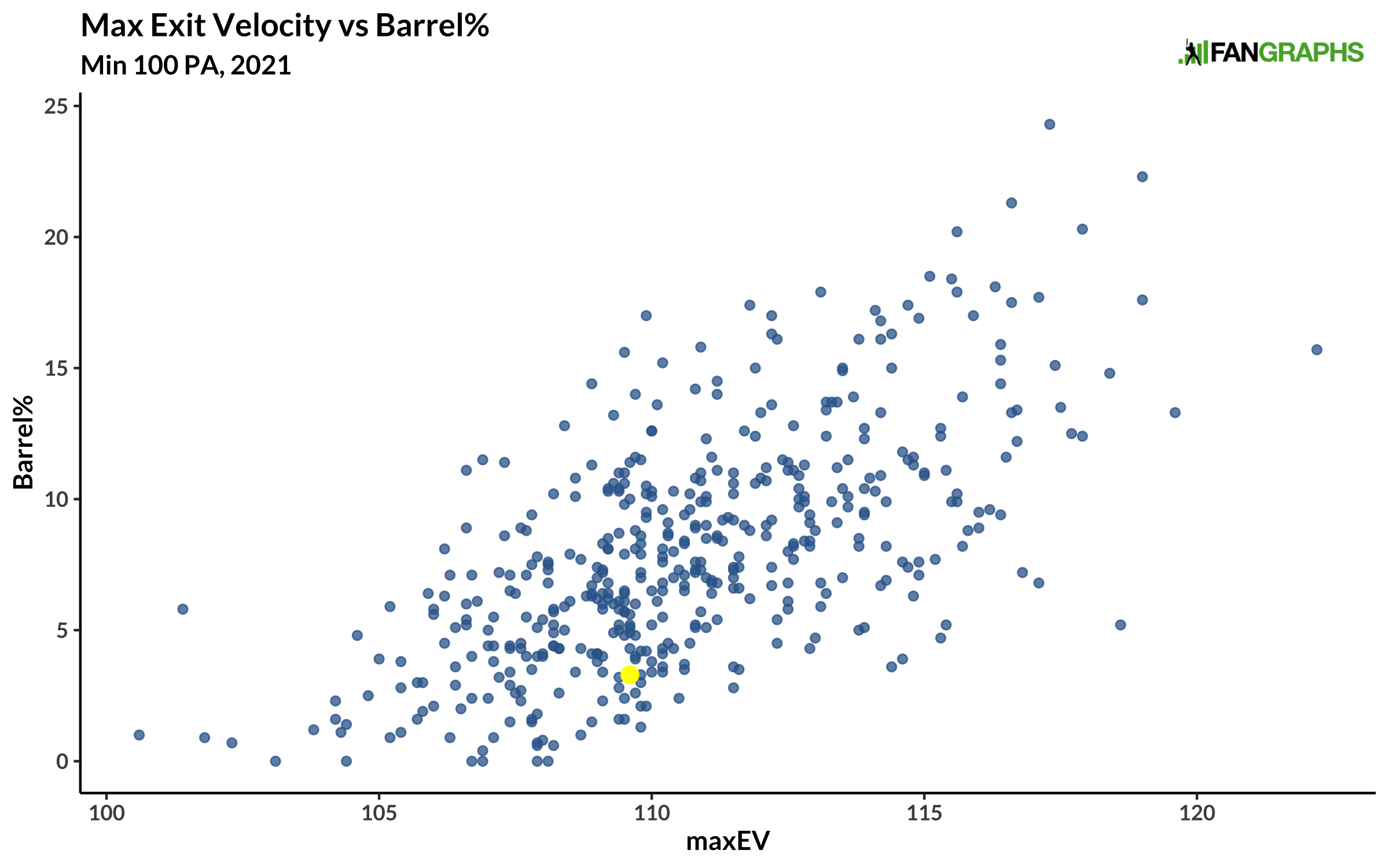Late Wednesday night, the Red Sox and Brewers consummated a trade that sent rightfielder Hunter Renfroe to Milwaukee in exchange for centerfielder Jackie Bradley Jr. and two prospects, shortstop David Hamilton and first baseman Alex Binelas. It was the last agreed-upon trade prior to MLB owners locking out the players at midnight.
While Bradley has had an excellent big league career, the center of this trade is Renfroe, who heads to his fourth team in four years and is coming off a 2021 in which he slashed .259/.315/.501 and cleared the 30-homer benchmark for the second time in his career. He becomes the fourth right-handed hitter acquired by Milwaukee over the last couple of weeks, after corner infielder Mike Brosseau, catcher Pedro Severino, and non-roster invite centerfielder Jonathan Davis. By wRC+, Milwaukee was 26th in baseball against left-handed pitching (96) in 2021; Renfroe is a career .263/.346/.557 hitter against southpaws and should help in this area immediately. And while there’s not a clear platoon partner for him in Milwaukee right now, perhaps Jace Peterson or Rowdy Tellez will take key late-game at-bats against righties in his stead or make the occasional start. Renfroe’s defense — especially his incredible arm, which is one of the best in pro baseball — gives him a little extra utility on days when he’s starting against a righty.
Renfroe has two years of team control remaining, as 2022 will be his second arbitration year and ’23 will be his last before hitting free agency after the season. Milwaukee has some similarly-skilled outfield prospects on the way in Joe Gray Jr. and Joey Wiemer, but unless they ascend more quickly than expected, it’s a safer bet that Renfroe wraps his pre-free agency days as a key cog in Milwaukee.
Conversely, this trade leaves Boston without a powerful, right-handed hitting outfielder on their roster. Obviously the Red Sox can continue to shape their roster after the lockout ends, but its current composition is heavy on lefty sticks in the outfield (Bradley, Jarren Duran, Alex Verdugo). The on-roster solution is for Christian Arroyo to get infield starts against lefties with Enrique Hernández moving to the outfield on those days. Another path may be for Jeter Downs (who had a terrible summer, rebounded in the Fall League, and was added to the 40-man last month) to push for at-bats in a fashion similar to Arroyo or be present depth behind him, as Arroyo gets hurt a lot. Or Triston Casas could kick down the door and claim the everyday first base job at some point, which would open up a lefty-mashing four corners role for Bobby Dalbec. There are clear, on-roster avenues for Boston’s pieces to compliment one another, though the front office probably is not done shaping the fringes of the roster.
Read the rest of this entry »

